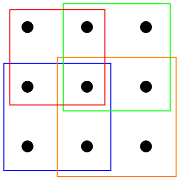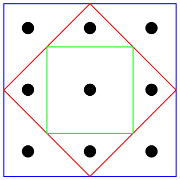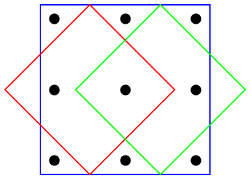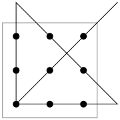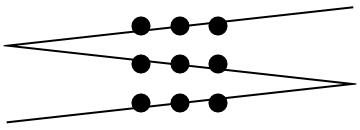The Conway subprime Fibonacci sequence is defined as follows. Start with the Fibonacci sequence 0, 1, 1, 2, 3, 5, …, but before you write down a composite term, divide it by its least prime factor. Thus, the next term after 5 is not 8, but rather 8/2 = 4. After that, the sum gives us 5 + 4 = 9, which is also composite. Thus, you write 9/3 = 3, then 4 + 3 = 7, which is okay since it is prime, then 3 + 7 = 10, but you write 10/2 = 5, and so on. Here is the sequence: 0, 1, 1, 2, 3, 5, 4, 3, 7, 5, 6, 11, 17, 14, 31, and so on.
My coauthors, Richard Guy and Julian Salazar, and I studied this sequence in our paper Conway’s subprime Fibonacci sequences, in which we allowed any two integers to be the two starting terms. Our computation showed that for small starting terms, the sequence starts cycling. In our first draft, we had a probabilistic argument as to why the sequence should always cycle. Our argument was the following.
Flawed probabilistic argument. Consider the parity of the numbers in a particular subprime Fibonacci sequence. I will leave it to the reader to see that such a sequence can’t have all even numbers. As soon we get to an odd number, the even numbers in the sequence become isolated. Indeed, if two numbers have different parity, the next number must be odd. For subprime Fibonacci sequences, when we add two odd numbers, there is a 50 percent chance that after dividing by 2, the result will be odd. Assuming the result is odd, there a is 25 percent chance the next number will be odd as well. And this pattern continues. Thus, as soon as we get two odd numbers in a row, on average, we expect three odd numbers in a run of odd numbers. Hence, we would expect a typical subprime Fibonacci sequence to have three times as many odd as even numbers.
This means, on average, two consecutive terms sum to an even number half of the time. Therefore, while calculating the next term, we divide by 2 with probability 1/2 and by 3 with probability 1/6. Ignoring larger primes, on average, we expect to have divided by at least 1.698, while the usual Fibonacci growth is only by a factor φ, which is approximately 1.618. We see that the subprime Fibonacci sequence is divided faster than its expected growth rate. Thus, it has to cycle.
However, this argument doesn’t work. When we submitted the paper, an anonymous reviewer pointed out that the argument was flawed. Here I want to explain why. I will start with a counterexample suggested by my sons, Alexey and Sergei.
Counterexample. Start with two real numbers. Suppose the sequence is to add the two previous numbers and divide the sum by 1.8 (which is greater than the golden ratio φ). The resulting sequence grows as a geometric progression with ratio 1.07321.
Here is a variation of the above argument.
Counterexample Variation. Suppose we have a sequence where we add the two previous numbers and then divide the sum by 2. We are dividing by a noticeably larger number than the golden ratio. By our flawed argument earlier, the sequence should decrease. But if we start such a sequence with two identical numbers n and n, the sequence will be constant, disproving the argument.
Here is an additional observation. Obviously, whenever we add two numbers and divide the sum by a number bigger than 2, the sequence has to cycle. Indeed, the maximum of two consecutive terms decreases. Can we add probabilities to this argument? Below is the averaging version of this argument for the subprime Fibonacci numbers. Unfortunately, this argument is also flawed.
Another flawed probabilistic argument. We need to show that, on average, at each step, we divide our sum by a number bigger than 2. We can ignore divisions by 2 as they are fine. Let’s see what happens with sums that we do not divide by 2. With probability 1/3, we divide them by 3. If not, with probability 1/5, we divide them by 5. Otherwise, with probability 1/7, we divide them by 7. Hence, if we do not divide our sum by 2, then with probability 1/3, we divide it by 3, plus with probability 2/15, we divide it by 5, plus with probability 8/105, we divide it by 7. Thus, on average, if we do not divide the sum by 2, then we divide it by at least 31/352/1578/105 = 2.07.
Counterexample to the second argument. Why is this wrong? Let us, for example, consider a sequence with the following recursions: a2k+1 = a2k + a2k-1. And a2k = (a2k-1 + a2k-2)/x, where x is a very large number. Then on average, we divide the sum by a very large number. Would this sequence converge to zero? If we look at it more closely, the subsequence of odd-indexed numbers increases. So the answer is no.
We found yet another probabilistic argument that the sequences shouldn’t increase indefinitely. We are sure that one works. Our anonymous reviewer was happy with it too. You can find the argument in our paper: Conway’s subprime Fibonacci sequences.
But I wrote this essay to show how tricky probabilistic arguments can be.
Share:






